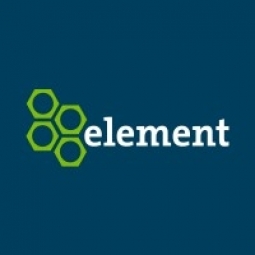Customer Company Size
Large Corporate
Region
- America
Country
- United States
Product
- Fleet Manager Program
Implementation Scale
- Enterprise-wide Deployment
Impact Metrics
- Cost Savings
- Environmental Impact Reduction
Technology Category
- Functional Applications - Fleet Management Systems (FMS)
Applicable Industries
- Chemicals
Applicable Functions
- Logistics & Transportation
Use Cases
- Fleet Management
Services
- System Integration
About The Customer
The customer is a regionally-based paint store chain. They have a total fleet size of 396 vehicles, which they use for both sales and delivery purposes. The fleet was previously comprised of ½ ton and ¾ ton cargo and passenger vans. The company sought to reduce costs and improve efficiencies in its fleet operations, and thus decided to turn the management of their fleet over to the experts at Element and its Fleet Manager Program.
The Challenge
A regionally-based paint store chain was looking to reduce costs and improve efficiencies in its fleet operations. They were using ½ ton and ¾ ton cargo and passenger vans for both their sales and delivery vehicles. The company wanted to become more streamlined in this area and decided to hand over the management of their fleet to the experts at Element and its Fleet Manager Program. One of the first tasks they assigned to Element was determining the best vehicle for their sales fleet.
The Solution
To determine the best vehicle for their sales fleet, Element reached out to the customer’s drivers, management and other company stakeholders, to see what they liked, disliked and needed in a vehicle to be as productive as possible. After further cost and use analysis, it was agreed sales vehicles would be downsized from large passenger vans to more efficient sedans. The vehicle selected would need to be cost efficient, but also offer safety options and emission savings to meet the values of the company. The decision was made to move to a hybrid sedan. Once the vehicle was selected, the next step was cycling out the existing passenger vans to receive the highest returns. Most of the vans were less than three years old, meaning there would be a remaining book value associated with them. After further analysis, a decision was made to execute a short-cycle plan to take advantage of high proceed sales as a result of replacing vans with the smaller sedans.
Operational Impact
Quantitative Benefit

Case Study missing?
Start adding your own!
Register with your work email and create a new case study profile for your business.
Related Case Studies.

Case Study
Honeywell - Tata Chemicals Improves Data Accessibility with OneWireless
Tata was facing data accessibility challenges in the cement plant control room tapping signals from remote process control areas and other distant locations, including the gas scrubber. Tata needed a wireless solution to extend its control network securely to remote locations that would also provide seamless communication with existing control applications.

Case Study
Advanced Elastomer Systems Upgrades Production
In order to maintain its share of the international market for thermoplastic elastomers AES recently expanded its Florida plant by adding a new production line. While the existing lines were operating satisfactorily using a PROVOX distributed control system with traditional analog I/O, AES wanted advanced technology on the new line for greater economy, efficiency, and reliability. AES officials were anxious to get this line into production to meet incoming orders, but two hurricanes slowed construction.
Case Study
Wireless GPS Tracking & Security Monitoring
Enhancing the security of hazardous freight and ensuring compliance with Homeland Security’s Transportation Security Administration mandate that all trains carrying chemicals capable of creating a toxic inhalation condition are equipped with on-board safety monitoring systems.

Case Study
Field Device Asset Management For Chemical Company in China
Chinese chemical subsidiary of multinational corporation serves customers throughout the world. Sales offices and research and technology centers are strategically located to provide rapid response to customer requests. Just two workers were assigned to maintain thousands of intelligent instruments in three production units, so they could do little more than react to device issues as they appeared. This costly maintenance method inevitably led to unexpected downtime when a critical instrument failed. Plant management recognized the need to change from reactive to predictive maintenance for all assets, including instruments and control valves, but help was needed in implementing such a technology-based initiative.

Case Study
Industrial Workforce Mobility for Improved Safety & Operations
Huntsman Corporation, a global manufacturer and marketer of differentiated chemicals, undertook an aggressive program to eliminate injuries, product defects, and environmental releases at their Port Neches facility. Termed “Project Zero”, this program required a completely mobile solution to empower operations and maintenance personnel to capture defects, track work progress and make process and safety related decisions in real-time.








